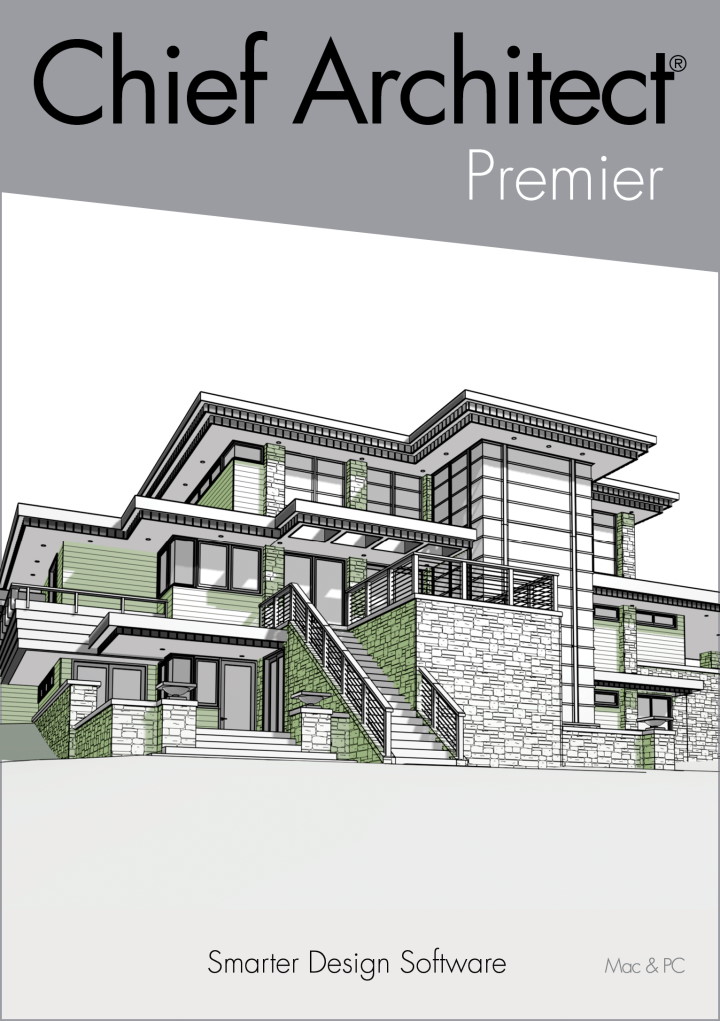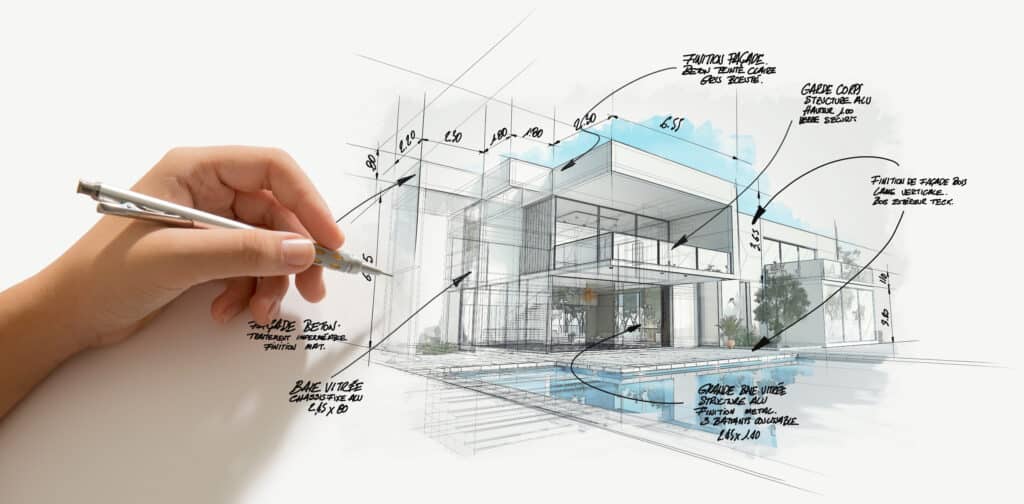Architect Advice on Optimizing Compact Urban Spaces
Architect Advice on Optimizing Compact Urban Spaces
Blog Article
Understanding the Diverse Job Paths Available for Aspiring Architect
As an aspiring Architect, you have a globe of job paths waiting for you. Each course offers special challenges and opportunities to use your imagination and technological know-how. Whether you're attracted to conventional architecture or the subtleties of lasting style, there's a niche that lines up with your passions. Comprehending these varied alternatives can shape your professional trip, yet which direction will you select to check out initially?
Traditional Architecture: Creating Structures and buildings
Standard design concentrates on creating structures and structures that mix capability with visual appeal. As you discover this field, you'll appreciate the elaborate equilibrium in between type and objective. You'll learn to attract ideas from historic designs, including elements like symmetry, materials, and craftsmanship. Your styles can show cultural heritage, showcasing regional traditions while satisfying modern-day requirements.
You'll develop abilities in drafting, model-making, and site evaluation, allowing you to visualize and interact your concepts effectively. Involving with customers, you'll need to comprehend their vision and equate it into viable layouts.
Moreover, constructing codes and sustainability methods are necessary in your work, ensuring your frameworks are secure and ecologically friendly. As you grow in your job, you'll discover opportunities in residential, commercial, or even reconstruction jobs, each offering unique difficulties. Accepting conventional architecture leads the way for a fulfilling occupation that admires the past while shaping the future.
Urban Planning: Shaping Areas and Public Spaces
As an aspiring Architect, you can play an essential duty as a metropolitan planner, changing how areas operate and communicate. By using area interaction approaches, you'll ensure that homeowners have a voice fit their environment. Plus, incorporating sustainable style concepts will aid create areas that not just fulfill today's requirements yet also shield the future.
Role of Urban Planners
While several could believe of designers as the sole enthusiasts behind buildings, urban coordinators play a vital function in shaping the broader landscape of areas and public rooms. By collaborating with various stakeholders, you'll help make parks, transport systems, and property areas that promote social communication and accessibility. Your competence in spatial style and community characteristics enables you to visualize future growth while preserving social heritage.
Neighborhood Engagement Strategies
Reliable area interaction strategies are essential for metropolitan organizers to assure that the voices of citizens are heard and valued in the preparation process. To foster purposeful dialogue, you need to focus on open forums and workshops where community participants can reveal their concepts and worries. Use surveys and social media sites to reach a broader audience, ensuring diverse viewpoints are included. Teaming up with regional companies can enhance trust fund and facilitate much deeper links. It is necessary to supply clear details about proposed projects and decision-making procedures, allowing citizens to feel educated and encouraged. By actively integrating and paying attention feedback, you'll produce rooms that show the area's demands, eventually leading to more effective and lasting urban settings. Welcome transparency and constant discussion for long-term influence.
Sustainable Style Concepts
When designing metropolitan spaces, integrating sustainable style principles is crucial for developing environments that grow both ecologically and socially. Consider incorporating environment-friendly rooms, like parks and gardens, to boost biodiversity and boost air top quality.
Creating with water preservation in mind is additionally key-- consider rainfall gardens and permeable surfaces to handle stormwater. Entailing area participants throughout the preparation procedure guarantees that the spaces you develop meet their needs and urge social communication. By welcoming these concepts, you'll add to dynamic, lasting metropolitan landscapes that profit everyone.

Landscape Style: Producing Sustainable Exterior Environments
As you check out landscape style, you'll uncover necessary style concepts that create practical and gorgeous outdoor spaces. Sustainable methods play an essential duty in making certain these settings flourish while lessening environmental impact. Plus, you'll discover a range of job possibilities that allow you to make an actual distinction in exactly how people connect with nature.
Layout Principles in Landscape
Recognizing layout principles in landscape design is vital for producing sustainable outdoor settings that harmonize with nature. You'll need to consider components like proportion, scale, and balance to ensure your designs really feel cohesive and inviting. Furthermore, pay attention to seasonal changes, making with products that complement the surroundings year-round.
Sustainable Practices Summary
Sustainable methods in landscape architecture not this content just concentrate on aesthetic appeals but also focus on eco-friendly health and resource conservation. You can create rooms that promote soil health and wellness, such as exercising and using organic materials permaculture concepts. Inevitably, these techniques guarantee your designs benefit both people and the atmosphere for years to come.
Occupation Opportunities Expedition
With a strong structure in sustainable practices, landscape style offers a variety of job paths that permit you to make a purposeful effect on the environment. Urban planners often team up with landscape designers to develop eco-friendly rooms in metropolitan setups, improving city livability. If you're passionate regarding education, consider coming to be a landscape design educator, inspiring future generations.
Lasting Layout: Concentrating on Eco-Friendly Practices
As you discover your career in design, embracing eco-friendly methods can establish you apart in a competitive area. Lasting style concentrates on creating buildings that decrease environmental effect while boosting occupant wellness. By incorporating sustainable products, energy-efficient systems, and lasting building strategies, you'll contribute to a greener future.
Beginning by gaining understanding of green accreditations like LEED or BREEAM, which can reinforce your qualifications. Take into consideration just how natural light, air flow, and thermal performance can maximize layout. Collaborate with designers and ecological professionals to introduce options that decrease waste and conserve sources.
Don't neglect the importance of area participation-- appealing local stakeholders can inspire layouts that integrate with the setting. As customers progressively prioritize sustainability, your experience in eco-friendly techniques will not only attract tasks however also accomplish your enthusiasm for liable design. Embrace this essential aspect of the profession, and view your job prosper.
Historical Conservation: Securing and Bring Back Cultural Heritage
While you commence on your architectural trip, take into consideration the crucial duty of historical preservation in keeping our social heritage. This field concentrates on the protection and restoration of substantial buildings, sites, and structures that inform the tales of our past. By participating in historical preservation, you'll help safeguard the building tradition that forms community identity.
As a historic conservation Architect, you'll assess historic value and analyze the condition of structures. You'll function carefully with historians and preservationists to ensure genuine repair methods are used. This profession path permits you to blend creative thinking with research, allowing you to make options that respect initial products and craftsmanship.
Your job not just adds to sustainability by recycling existing structures however additionally fosters a sense of pride within areas. Embracing this course will certainly help you end up being a guardian of history, protecting the tales and appearances that enhance our click here to find out more lives.
Inside Style: Enhancing Indoor Spaces
Historical preservation and indoor style both share a commitment to improving the developed environment, yet they concentrate on various aspects. While historical conservation emphasizes maintaining a structure's cultural and historic worth, indoor architecture zeroes in on enhancing interior areas for capability and aesthetic appeals.
As an ambitious Architect, you'll locate that indoor architecture permits you to blend imagination with technological abilities. You'll make rooms that not only look great yet additionally advertise convenience and performance. This area entails understanding how light, color, and materials interact within a space, impacting state of mind and functionality.
You'll work with various jobs, from household homes to industrial workplaces, making sure that each setting satisfies the needs of its residents. By prioritizing user experience, you can change insides right into motivating and practical spaces, making a considerable effect on exactly how people communicate with their surroundings. Embrace the possibility to improve interior atmospheres and shape the means individuals work and live.
Industrial Layout: Combining Capability With Aesthetics
Commercial style plays a necessary function in creating items that flawlessly blend aesthetic appeals with functionality, making sure that what you utilize daily is not just aesthetically appealing yet likewise useful. As an ambitious Architect, you might immerse on your own in this field, concentrating on designing every little thing from furniture to customer electronics. Your work involves recognizing individual needs, products, and manufacturing procedures, permitting you to produce innovative options that enhance day-to-day experiences.
In industrial layout, you'll usually work together with designers, marketing experts, and producers, ensuring that your styles are not just gorgeous however additionally possible. You'll discover to balance kind and feature, prioritizing functionality without giving up design. By honing your skills in mapping out, 3D modeling, and prototyping, you'll be well-appointed to bring your concepts to life. This career course provides a dynamic atmosphere where creative thinking fulfills practicality, making it a satisfying selection for designers interested in forming the items of tomorrow.
Frequently Asked Questions
What Educational Qualifications Do I Required to Come To Be a Designer?
To become an architect, you'll need a professional degree in architecture, typically a Bachelor's or Master's. Furthermore, you'll have to finish a teaching fellowship and pass the Architect Enrollment Examination to practice legally.
Are There Accreditation Demands for Various Building Profession Paths?
Yes, there're certification requirements for various architectural paths. Architect. You'll need to pass examinations, total internships, and occasionally pursue specialized training, relying on your selected focus, like landscape design, metropolitan layout, or historical preservation
What Software Application Skills Are Essential for Designers Today?

Exactly How Can I Gain Practical Experience While Studying Architecture?
You can acquire practical experience by interning at architectural firms, Look At This taking part in style competitors, volunteering for area tasks, or teaming up with schoolmates on real-world jobs. These chances enhance your abilities and develop valuable links in the sector.
What Task Opportunities Exist Outdoors Conventional Style Firms?
You can explore various job chances outside conventional design companies, like metropolitan planning, interior decoration, landscape architecture, building monitoring, property growth, and even duties in sustainability consulting. Each offers unique difficulties and benefits.
Whether you're attracted to conventional style or the subtleties of lasting layout, there's a niche that aligns with your passions.When making urban rooms, integrating lasting layout principles is critical for developing atmospheres that thrive both environmentally and socially.As you check out landscape architecture, you'll uncover necessary design principles that produce stunning and functional exterior spaces.Understanding layout principles in landscape architecture is essential for developing lasting outside settings that harmonize with nature.In industrial design, you'll commonly work together with suppliers, online marketers, and designers, guaranteeing that your layouts are not only attractive yet also practical.
Report this page